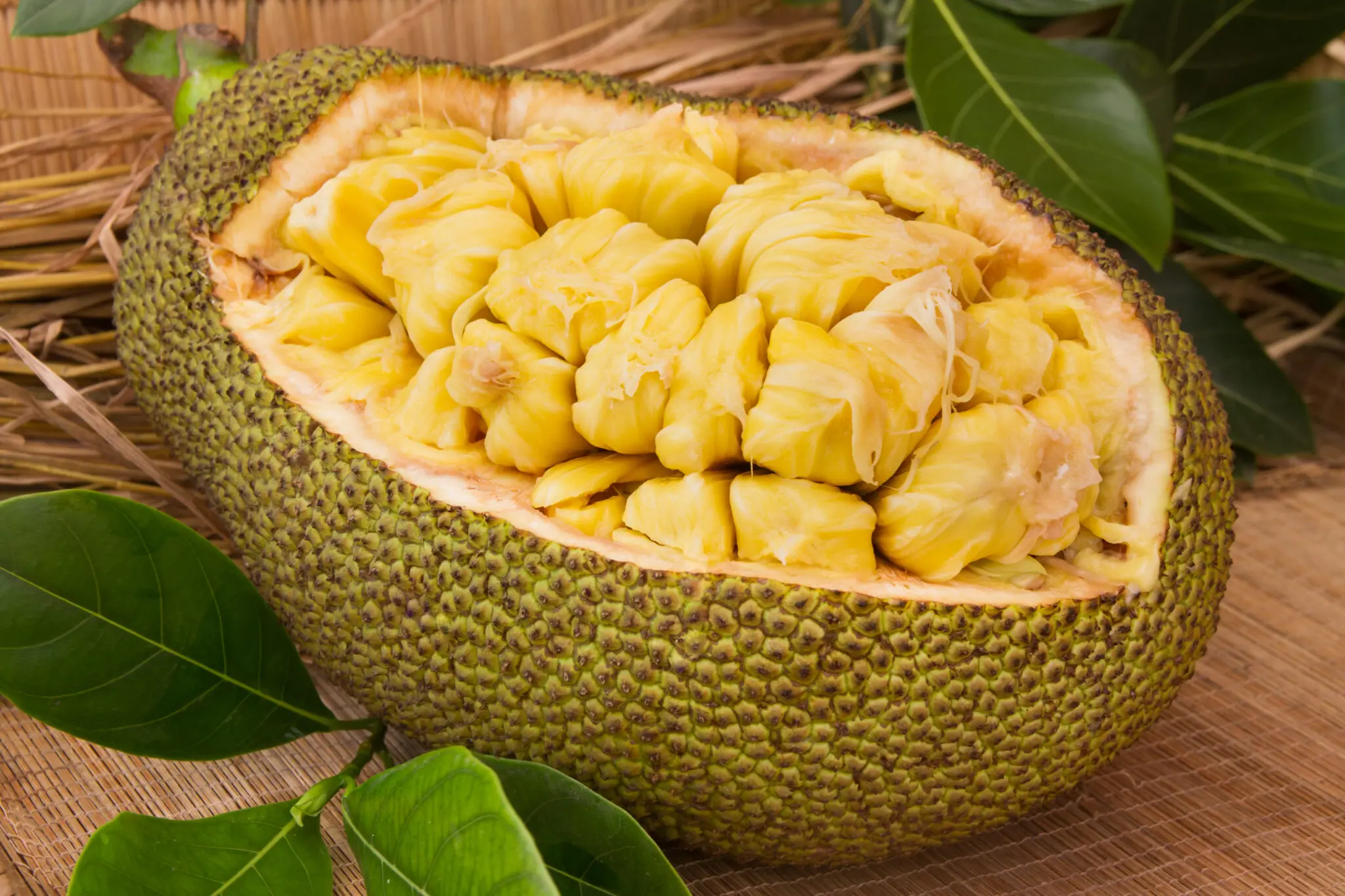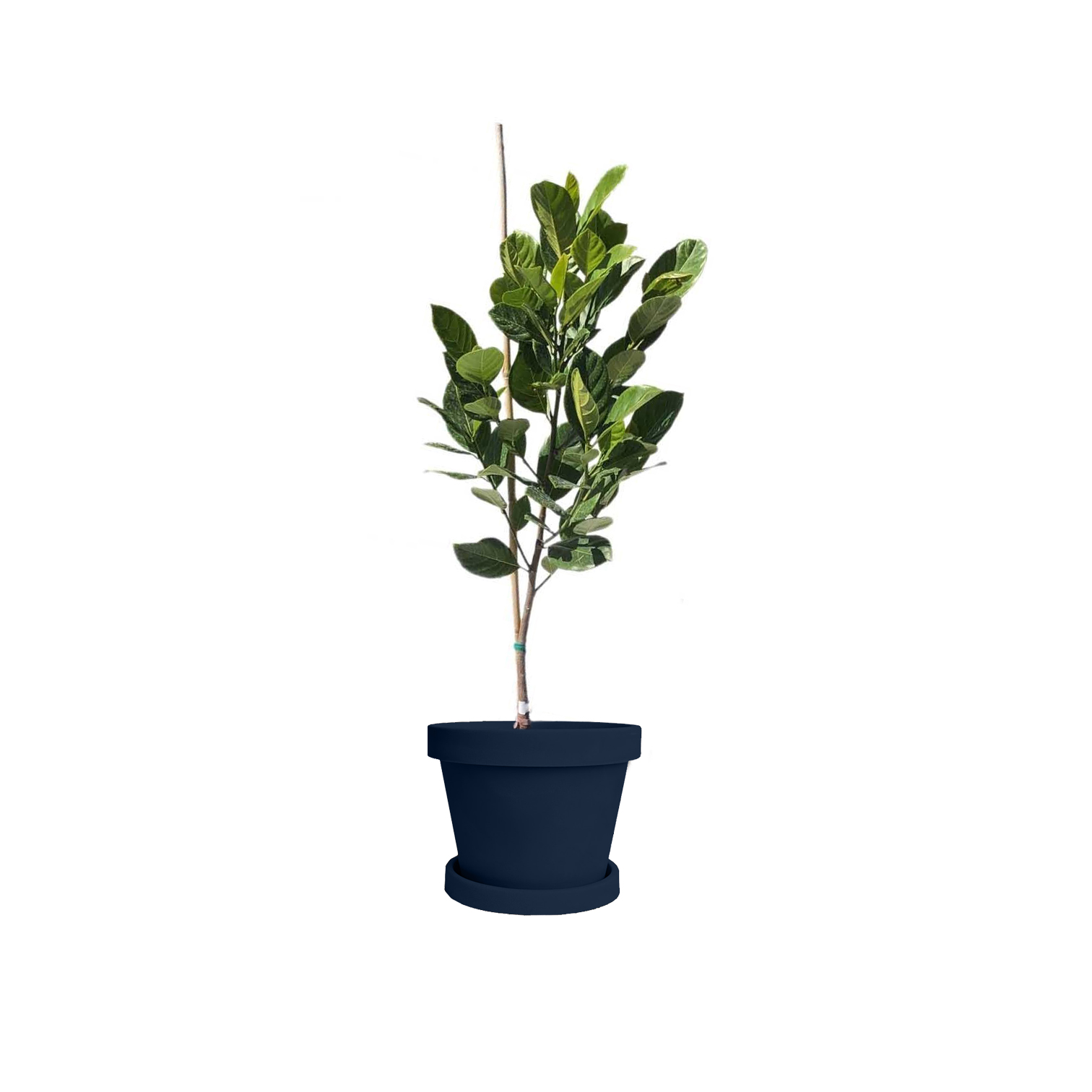Description
Originally discovered in India and Malaysia, the Jackfruit Tree (Artocarpus heterophyllus) is related to both the fig and mulberry tree, but Jackfruit is much different than these more common relatives. The Honey Gold Jackfruit typically produces a medium-sized fruit. The most interesting feature of this tropical fruit tree is that it grows its fruit on stems that emerge from the bracts of large branches, as well as upon the tree’s main trunk itself.
Jackfruit Trees have large, dark green leaves and a somewhat spreading habit which creates shade and habitat for nesting birds. Jackfruit Trees are suited for growing in-ground within USDA Zones 9 to 11, and in pots in Zones 4 to 11. The fruit’s edible pulp is described as a mix of pineapple, banana, and mango. Jackfruit Trees do best in partial shade to full sun and start to reliably make fruit after 3 to 5 years in the ground. Add a tropical Jackfruit Tree to your edible garden and amaze everyone who sees and tastes this exotic fruit.
Jackfruit Tree Care
In tropical jungles Jackfruit Trees can grow up to 80 feet tall. Although they may not reach such lofty heights, Jackfruit Trees can grow fine in the US in areas such as the tropical south, the gulf coast, or the southern locations of the west coast. While Jackfruit Trees have deep taproots and do best in the ground, they can also be grown in large pots in colder spots, and brought inside for winter. They like rich but well-drained soil that has plenty of organic matter. Jackfruit Trees will not survive freezing temperatures or long periods of soggy soil.
Plant Papi Jackfruit Trees in locations that receive five or more hours of direct sunlight every day. The best spots have a combination of an open southern exposure and protection from north winds. Clear a six-foot diameter planting area by removing all grass and weeds in early spring. Add compost, manure, and clean sand to the ground and turn it into the soil well. Prepare a hole that is twice the size of the potted tree’s root ball, and plant the tree so the root ball surface is even with the ground level. Backfill with compost and sand and water in thoroughly. For the first six months water when soil is dry down to two inches deep. After this period, reduce watering to once a week, or less in times of heavy rainfall.
Jackfruit Harvesting and Uses
Papi Jackfruits trees will produce a high-quality Jackfruit that weighs around 10-13 pounds each. The fruits follow blooms and are held by short stems appearing on the tree’s trunks or large limbs. Papi Jackfruits are ready to pick when the green rinds begin to show several yellow or slightly tan spots. If the fruit is picked too soon, the interior will have astringent pulp and persistent rubbery latex throughout. Perfectly ripe Papi Jackfruits will have succulent pulp capsules surrounding the large shiny black or brown seeds. Papi Jackfruit has soft flesh and is very sweet.
Papi Jackfruit Trees usually begin producing fruit after 1 to 3 years in the ground. Once the trees begin to make and hold their fruits, it may take some experimentation to learn to pick the perfectly ripe Jackfruit. Once picked, use a sturdy cutting board and a large knife to carefully split the pods, and remove the edible interior sections. Ripe Jackfruits are eaten raw, cooked in savory dishes, and blended into smoothies and tropical drinks.
Advice
After the season’s fruit has been harvested each year, cut out any dead branches. Cut trees back in late winter, before new vegetative growth begins. Be sure to remove branches and fallen fruit from the tree’s immediate area to discourage fungus and pests that could damage the Jackfruit tree trunk or roots.
Papi Jackfruit Trees can benefit from mulch around the tree base and growing area out to the drip line, or furthest reaching branch tips out from the trunk. Add 3 to 4 inches of mulch such as tree bark, wood chips, or leaves, to the ground and water the mulch down well. More mulch can be added at any time to help stop weeds and keep the soil moist. Increase mulch depth to 6-inches in colder months, to help insulate the Papi Jackfruit Tree’s surface roots.



What others are saying
There are no contributions yet.